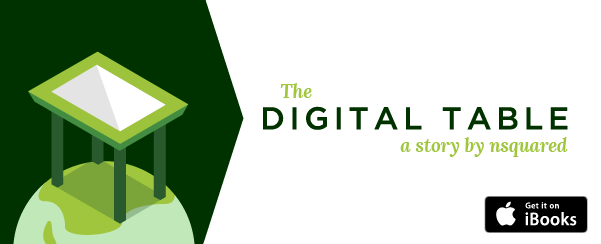This blog was written by one of our digital designers, Morgan Stokes.
You start having a
conversation with someone and you find yourself talking about how blogging was
so 2004, but then you realise that was 7 years ago, and then it turns out that
actually blogging is so hot right now. The digital landscape is changing rapidly.
We all know this and live it every day. We find ourselves well acquainted with
initialled neologisms like “FB” and “TBT”, and depending on your technological
inclinations, words like “IFTT”, “IoT” and “UX” somehow slip into your
day-to-day repertoire.
UX (or User
Experience) design is not a new concept, and is certainly not limited to
digital media. User Experience is about how a person ('user” suggests they are
abusive of the system, i.e. drug user) feels when using a designed artefact.
You feel something when you use a mug. You pick it up, the porcelain feels soft
on your hand and it’s comforting. It feels hot when you have tea in it, too
hot! MAKE IT STOP! These are not necessarily conscious critiques of the
designed object, but they are thoughts that have (or should have been)
considered in the design process.
The recent boom in
the discourse about UX has arisen as a result of the digital revolution. The
User Interface (or UI) of the digital medium, the visual elements that a person
will interact with on the screen, is limitless. Compared to a mug which can only
be made out of a fixed number of materials, the digital UI can appear to
contain anything you want in the world. You want your app to be a solitary
unicorn braying in the breeze? You got it. This is where the discussion about
UX becomes critical. Maybe Users don’t realise you have to pat the unicorn
three times to get something to happen. The confusion might make people
frustrated. The unicorn might make people happy. The feelings that arise as a
result of the UI/UX are infinite and, through design, can be infinitely
manipulated.

Do you know what
this symbol means? In 2008, you probably didn’t. UI/UX Designers have developed
a visual language we slowly grow accustomed to as we get more tech savvy (sorry
I used the term “tech savvy”). We only take 10
seconds to assess a site, or an app, to make our judgement: do we hate
it or do we not hate it? These 10 seconds are critical. If something does not
work the way we want it to, we give up and complain to our friends or, worse,
we forget about it and never visit the site again.
Our understanding
of screens is getting increasingly sophisticated. The process of how to
interact with a digital screen is a visual language we are all slowly learning,
and most of us are not even aware of it. We immediately recognise the burger
menu, the kebab menu, the back arrow, the settings cog with no text caption
needed. Our navigation, interaction and entire digital experience has been
sharpened to the point that our attention span has dropped from 12 seconds a
decade ago to 8 seconds in 2015. That’s shorter than a goldfish’s (at 9
seconds). The danger for brands in this highly sophisticated world is that
average UX is bad UX, and design standards are only growing.
IoT
This
presents quite the pickle for the UX designer of devices beyond the phones,
desktops and tablets, to which we have spent years growing accustomed. We are
guaranteed a world in the not-too-distant future (by 2020 at the latest), where
screens will be an old concept. Surfaces will be how we interact with the
digital world. Integrated within other pieces of objects and furniture, this
future is referred to as the Internet of Things (IoT). Indeed, the role of the
UX designer will be critical in shifting our relationship with technology to
make the most out of IoT, to make these advancements manageable, friendly and
useful.
The
challenge that the UX designer of 2015 faces is that the visual language of a
phone does not necessarily translate to the visual language of a fridge. Both
devices have certain capabilities, one will perform a task better than the
other and vice versa. It is one thing to learn to double tap your phones home
screen button to show open apps, it is another to learn to give your fridge a
five-finger pinch to give you ice.
The Digital Table
My job is as a
digital designer for digital tables.
Think about the
tables in your life. The table is a unique, horizontal meeting spot, designed
for any amount of people and for various personal and collaborative tasks. You
can come at it’s surface from any angle, so unlike a phone or a computer,
tables have no orientation. Tables are for leaning, work sprawls, food sprawls,
chortling, chatting, sitting. Sitting at a table with a friend, while they are
on their phone, automatically takes them out of the conversation. Personal
devices break the social contract. The surface of the table is already a
collaborative tool. As our tech savviness only increases, the digitisation of
the table as a multi-user device makes sense.
A search for
multi-user, multi-touch software design yields negligible quality results. This
blog is aimed at helping people understand the challenges of UX design for the
future, and also to help others to design for engaging multi-user, 360 degree
usability based on our research at nsquared.
As technology
advances, our digital user experience is constantly improving. To tackle this
challenge, UX designers require innovation, creativity and a keen understanding
of human behaviour.
My blog next week
will be on what makes a successful tabletop app; a device that is horizontal,
static and multi-user.





















.jpg)

.jpg)
.jpg)
.jpg)
